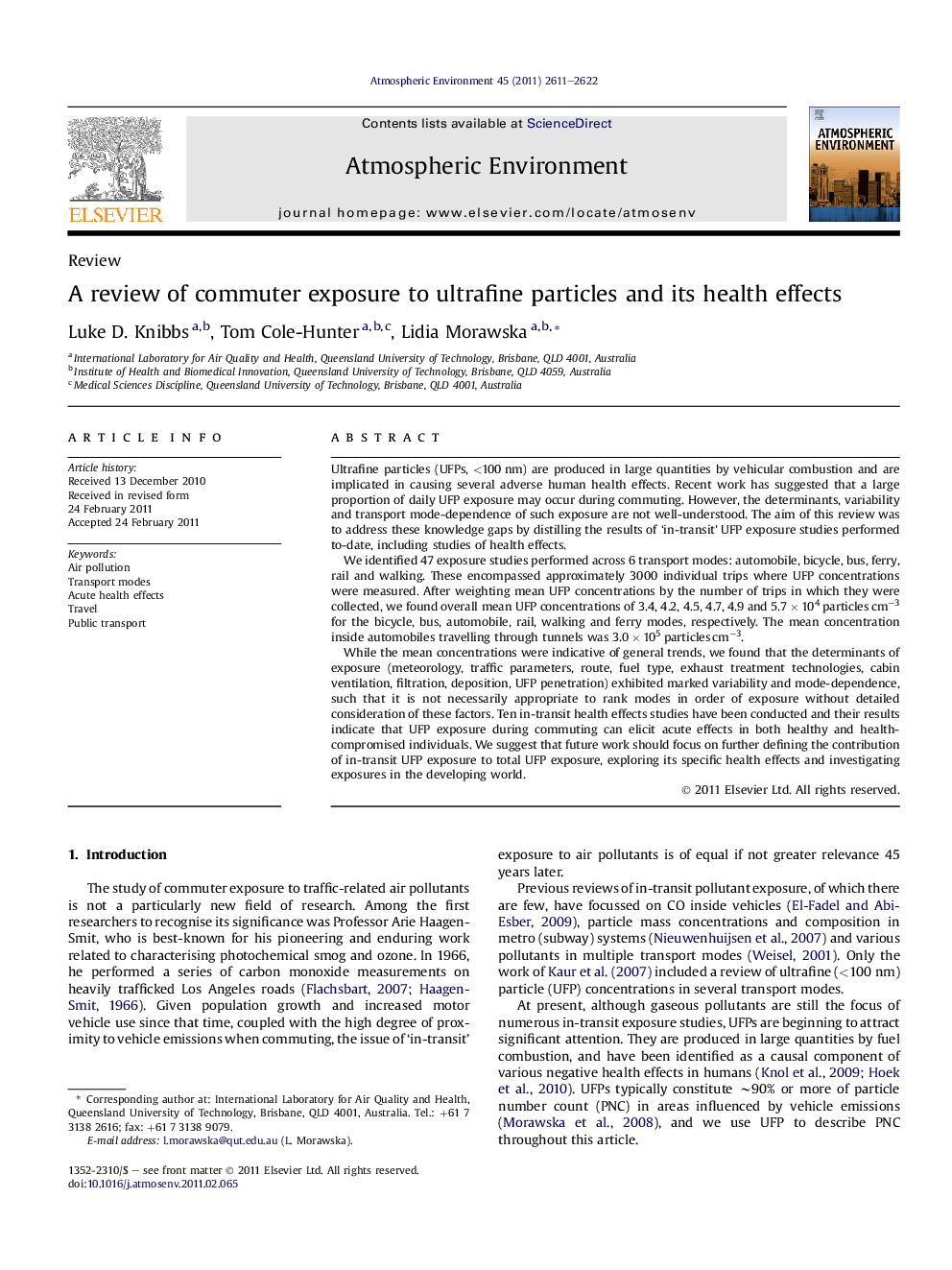| Article ID | Journal | Published Year | Pages | File Type |
|---|---|---|---|---|
| 4439970 | Atmospheric Environment | 2011 | 12 Pages |
Ultrafine particles (UFPs, <100 nm) are produced in large quantities by vehicular combustion and are implicated in causing several adverse human health effects. Recent work has suggested that a large proportion of daily UFP exposure may occur during commuting. However, the determinants, variability and transport mode-dependence of such exposure are not well-understood. The aim of this review was to address these knowledge gaps by distilling the results of ‘in-transit’ UFP exposure studies performed to-date, including studies of health effects.We identified 47 exposure studies performed across 6 transport modes: automobile, bicycle, bus, ferry, rail and walking. These encompassed approximately 3000 individual trips where UFP concentrations were measured. After weighting mean UFP concentrations by the number of trips in which they were collected, we found overall mean UFP concentrations of 3.4, 4.2, 4.5, 4.7, 4.9 and 5.7 × 104 particles cm−3 for the bicycle, bus, automobile, rail, walking and ferry modes, respectively. The mean concentration inside automobiles travelling through tunnels was 3.0 × 105 particles cm−3.While the mean concentrations were indicative of general trends, we found that the determinants of exposure (meteorology, traffic parameters, route, fuel type, exhaust treatment technologies, cabin ventilation, filtration, deposition, UFP penetration) exhibited marked variability and mode-dependence, such that it is not necessarily appropriate to rank modes in order of exposure without detailed consideration of these factors. Ten in-transit health effects studies have been conducted and their results indicate that UFP exposure during commuting can elicit acute effects in both healthy and health-compromised individuals. We suggest that future work should focus on further defining the contribution of in-transit UFP exposure to total UFP exposure, exploring its specific health effects and investigating exposures in the developing world.
► Ultrafine particles (UFPs) can cause negative acute health effects in humans. ► Commuting can account for a significant proportion of daily exposure. ► Exposure depends on transport mode used and a range of determinant factors. ► This paper explores these factors and makes recommendations for future research.
